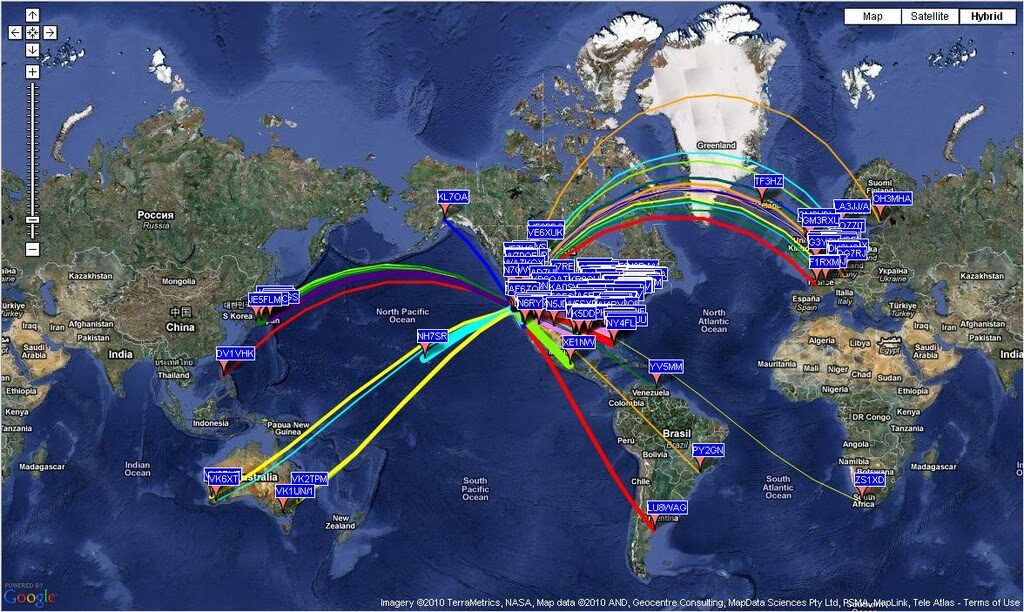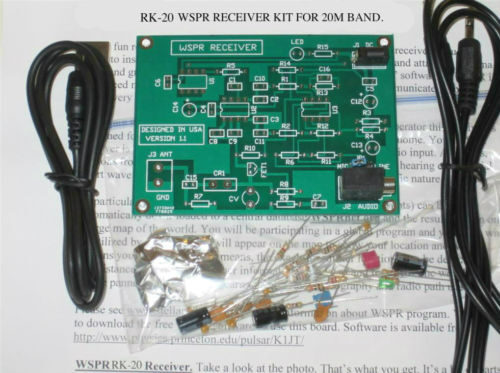Advances in communications in recent years have come at a startling pace. In the old days, tocommunicate via radio one needed a good antenna, a selective receiver, and a powerful transmitter.While those items are still useful, today there is one more item required: good software. The “weaksignal propagation reporter” software or WSPR (pronounced “whisper”) is one such advancedmethodology. WSPR will astound you with its ability to communicate globally using very low powerwith received signals at or near the noise threshold. We are talking (in this context) abouttransmitting power levels of 500 milliwatts (mW) and often much less. One of my WSPR signals wasreceived 1,600 Km away from my home while I was using only 10 mW of transmitter power and ashort 24 foot length of wire. Low power WSPR signals were received on the same piece of wire fromover 6,000 Km away.
By George Steber
If you are an educator, electronics experimenter or amateur radio operator this receiver is designed for you. It can be used in the classroom, on vacation or at home. Your WSPR receiver is simply connected to a wire antenna and a PC via the audio input. As it runs, stations from around the globe may be received. It is different than hearing commercial short wave broadcasting because you are receiving data of a scientific nature.
A particularly nice feature of WSPR is that “receptions” (called spots) can be automatically down-loaded to a central database WSPRnet.org and the results shown on a large map of the world. You will be participating in a global program and your data will be utilized by others. A flag will appear on the map to show your location and which stations you received. By this means, the exact transmitter locations can be determined and distances, headings and other information calculated and reported. The world map can be panned and zoomed to learn more about the geography and radio path used.
Please see www.stellarwspr.com for more information about WSPR program. You need to download the free WSPR software to use this board. Software is available from: http://www.physics.princeton.edu/pulsar/K1JT/
It’s a kit of parts for your own 20 meter WSPR receiver. This unit is for the 20 meter band (14 MHz), a good band for long distance communication. Kit comes with audio cable and USB power cable. No enclosure is included. No SMD parts are used.
Kit is for intermediate to advanced builders. If you have never built a kit before or are not familiar with PCBs then do not order. Elsewhere on eBay we are offering a completely assembled unit. Partially assembled kits may not be returned.
Please Note. Customer supplies antenna. Usually a 5 meter (16.4 feet) antenna and a ground wire works well for the 20 meter band. Random wire antenna works too. Power is supplied to WSPR RK-20 via the USB on your computer via the cable supplied. If desired, a separate 5V power supply (for those who do not wish to use the USB port) can be used (not included). It uses the same USB cable supplied. Some USB ports are noisy and so a separate power supply can give improvement in reception. No enclosure is included.
For International Customers:
Shipping will vary depending on your location. Item ships via USPS in a small flat rate box.
SKU RK-20 Price: $49.95 USD
Also available Kit’s:
WSPR Receiver 30M Assembled RW-30 (Price: 69.95 USD)
WSPR Receiver 30M KIT RK-30 (Price: 49.95 USD)
WSPR Receiver 20M Assembled RW-20 (Price: 69.95 USD)


